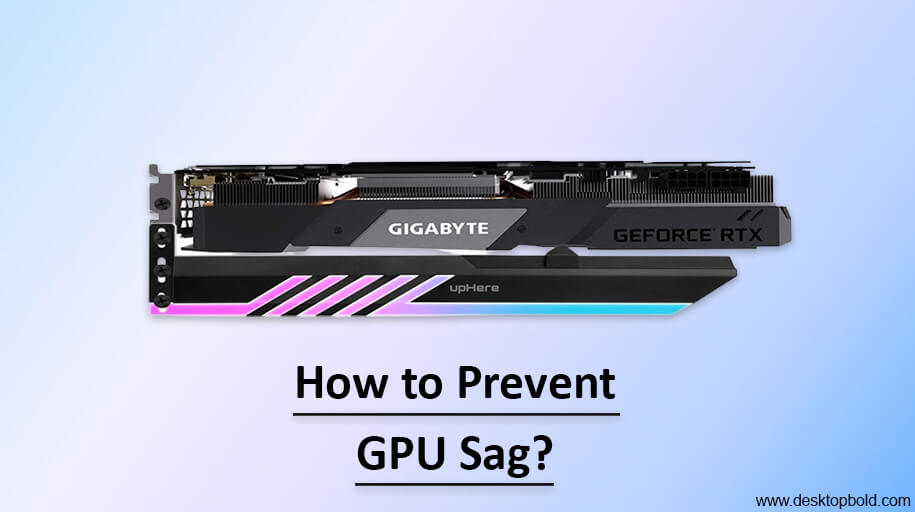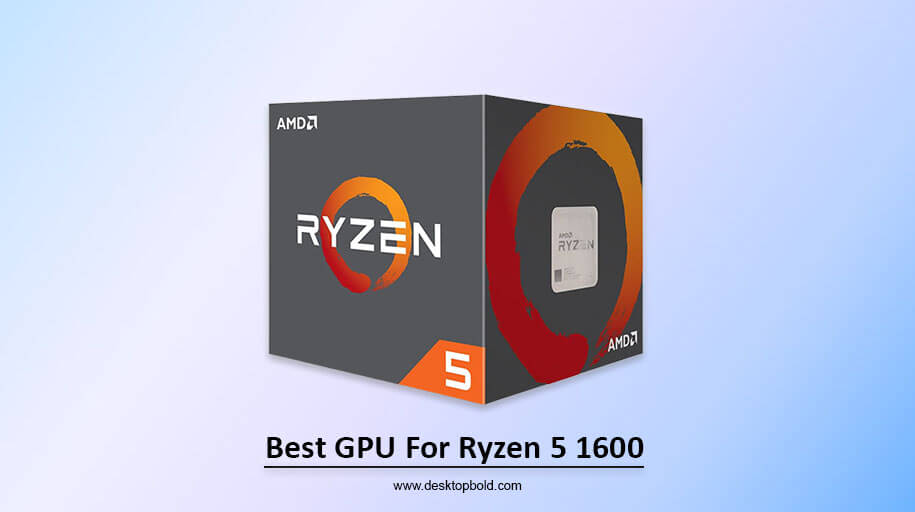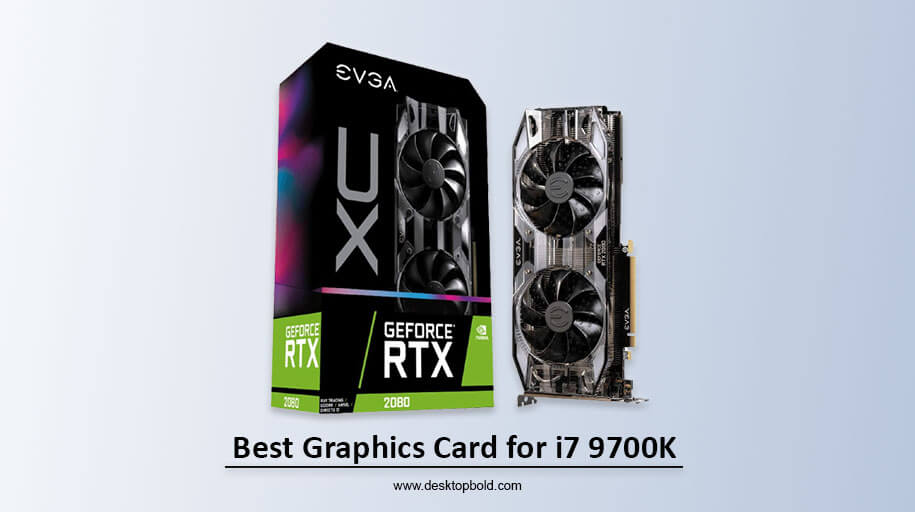One of the most important things for a PC user is to keep the graphics card from sagging. As graphics cards get better, they also get bigger and heavier. So, sagging is a common problem with high-quality cards in custom PCs.
In this article, I will tell you how to prevent GPU sag and various methods for preventing GPU sag so that you can make your GPU lifespan longer than usual. For this purpose, read this article thoroughly.
What Is GPU Sag?
The increased cooling and power requirements of high-end graphics cards have resulted in a noticeable increase in their overall mass. Due to this, the GPU may become “bendy” in a disturbing form known as “GPU sag.” The card slot and the screws that hold the graphics card to the motherboard back plate provide stability when installing a new card. This indicates that the card’s PCIe slot is at risk of damage from the card sagging under its upper rear corner weight.
If you want to avoid GPU sag, taking the necessary steps to reduce it is essential. Many game users ask how to minimize GPU sag to retain its longevity. Here’s the answer to this.
How much GPU Sag is too much?
A sag is entirely eye-catching unless it causes a functioning issue. But if your graphics processing unit (GPU) starts moving closer to other components, that’s a problem. Though graphics processing units (GPUs) aren’t likely to ultimately damage other features, the strain they exert on more fragile components might be dangerous.
How to prevent GPU Sag? 6 Simple ways
Install a GPU support brace
It’s recommended to get a GPU brace for your computer to prevent damage. To protect the GPU from sagging and ensure its safety, you may use these measures. Braces for GPUs may be either vertical or horizontal. Each has its advantages and disadvantages, and both perform in different contexts.
Support It With PCIe Power Cables
Power connections for PCI Express are usually required to provide extra power to high-end, heavy cards. Putting a little stress on these wires using the cable management system in your chassis will help decrease GPU sag. Given the durability of PCIe power connections and the need for extra weight, this may solve the visual issues with GPU sagging if done carefully.
Use dark nylon string to secure the GPU
The graphics processing unit (GPU) may be kept from sagging with a strong string like a nylon cable. Wrap the rope around the panel’s handle and secure it with the backplate mount. Be sure the line you choose can survive the heat generated by a regular GPU. Choose a dark color if LEDs are in the casing, and you want the string to blend in.
Prop the Card Up
The card may be supported by anything else inserted between the base of the tower case and the card itself. You may use anything you want. It’s possible to construct a tall LEGO structure, trim a piece of wood to fit, or make a high-quality object using a 3D printer. It’s not the simplest solution, but it’s one of the possibilities.
Suppose you need something more permanent that doesn’t appear homemade. In that case, you can purchase professional, adjustable props like the MHQJRH GPU Brace Support, but this is still only a good idea for a computer that won’t be moved about.
Add an acrylic backplate.
The back of a graphics card may be protected from damage by a thin metal plate called a backplate. The cooler on the card is supported by the backplate, which also works as a brace to keep the PCB from bending. Certain backplates also facilitate card back cleanup. To prevent the GPU from sagging, backplates are often used.
How to know if your GPU card has sagging damage?
As everybody knows, GPU sagging can cause damage. So, along with How to prevent GPU sag, it is also mandatory to understand how to know if your GPU has sagging damage.
GPU sag usually isn’t ample a problem for your graphics card, but it can cause further damage. First, as a GPU isn’t where it should be, it can grab other metal parts and cause damage. It’s also more common for your GPU to be damaged if it continues sagging. Before making the assumption that the card is destroyed, it’s best to look at it.
You may check the card for damage by removing the desktop back panel. If the GPU seems OK, you may plug it into your computer. Despite this, keep in mind that the absence of apparent damage is no guarantee that your GPU is not sagging.
If your GPU is sagging and you’re experiencing any of the following, it may be damaged.
Signs your GPU card has sagging damage:
Several signs may indicate your GPU card has sagging damage. But here in this article, I will tell you 5 signs your GPU has sagging damage.
- Visual distortion:
Visual distortion is revealed during video card usage, such as while playing a game or watching a live stream. When a computer screen malfunctions, unexpected patterns of color or form may appear, this may be fixed in most cases by restarting the game or software. However, the problem will reappear after a system restart if the video card is damaged.
- Driver crashes:
The screen will go back to normal after being silent, but the computer will notify you that the video drivers have stopped and need a restart. As a result of the damaged GPU, this will occur occasionally, but it won’t create any problems with the computer.
- Error messages:
When the GPU card is damaged, you can see error messages about the graphics or the display.
- Reduced performance:
The GPU card’s overall performance might be better if its case sags since this reduces its ability to dissipate heat and conduct electricity. This doesn’t mean that your video card is responsible for the increased fan speed. However, if you also experience the following issues, it’s time to replace your GPU
- Physical deformities:
Sagging damage is readily apparent in a GPU card bent or distorted visibly.
How to detect GPU damage using the software?
If your Windows GPU performance seems to be slowing, you may check for sagging by following these steps:
- Activate Windows’s Settings menu.
- Navigate to the Settings tab, then choose System and Security.
- The next step is to go to Device Manager.
- Go to the section labeled “Display Adapters.”
- To activate your graphics card, double-click its name.
- Look below at the “Device Status” tab. Any problems that the program finds will be shown here.
Conclusion
In conclusion, GPU sag is a common issue that affects most PC enthusiasts and gamers. It occurs when the graphics card becomes too heavy for the PCIe slot and starts to droop. To prevent GPU sag, you can use a graphics card support bracket, which helps distribute the weight of the graphics card evenly.
And last but not least, the article written above on the topic, How to Prevent GPU Sag, is ending up here, and soon, I will get back to you with another article of your concern. Enjoy reading it!




